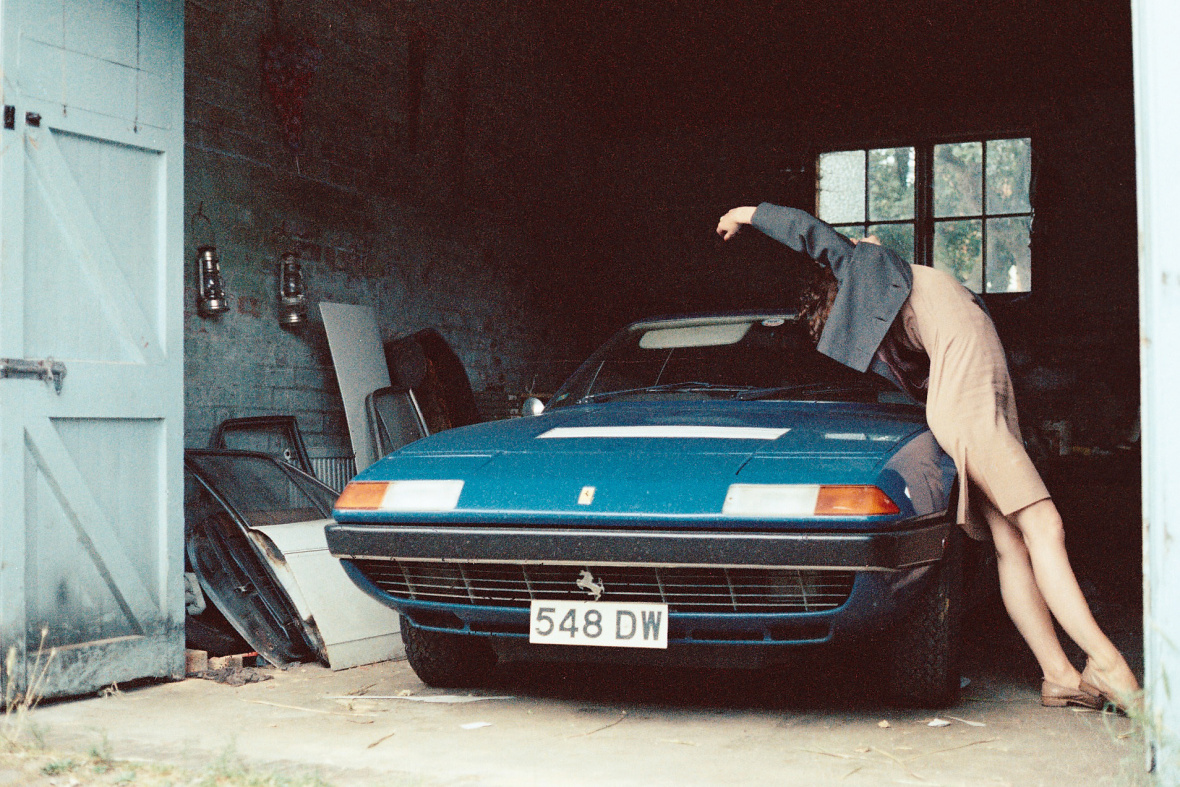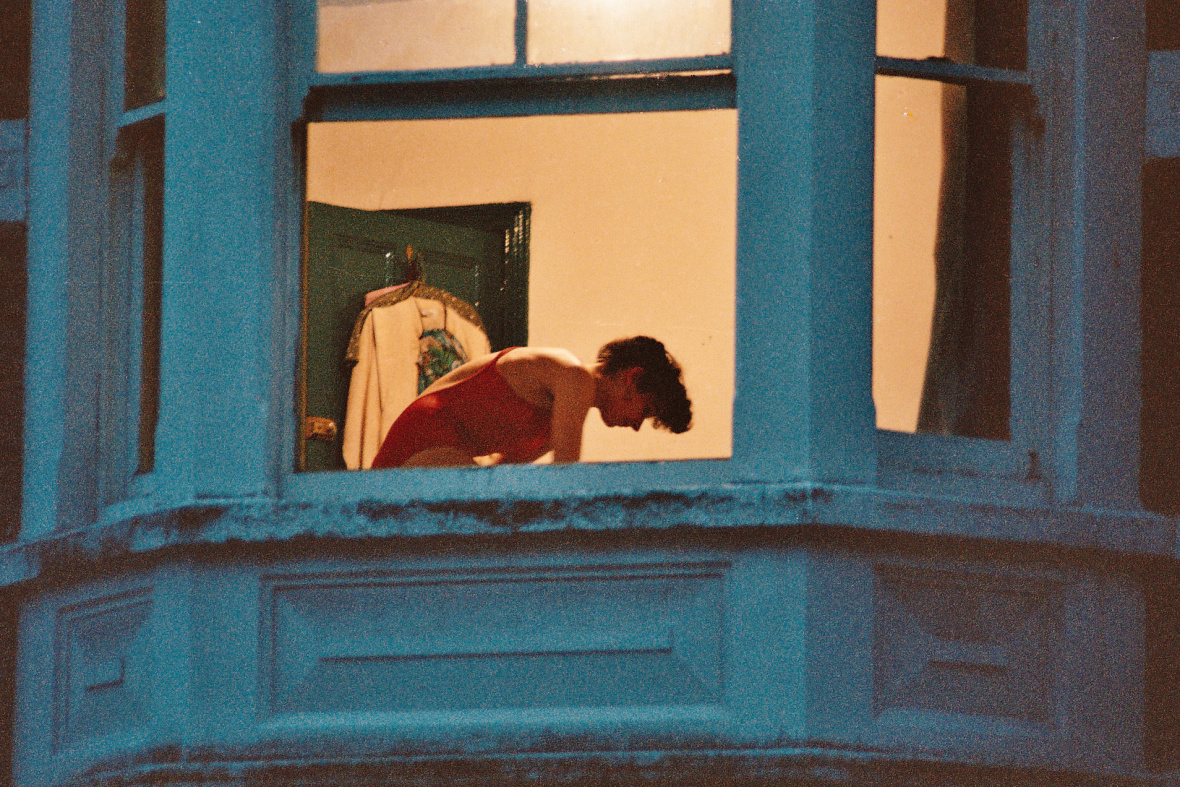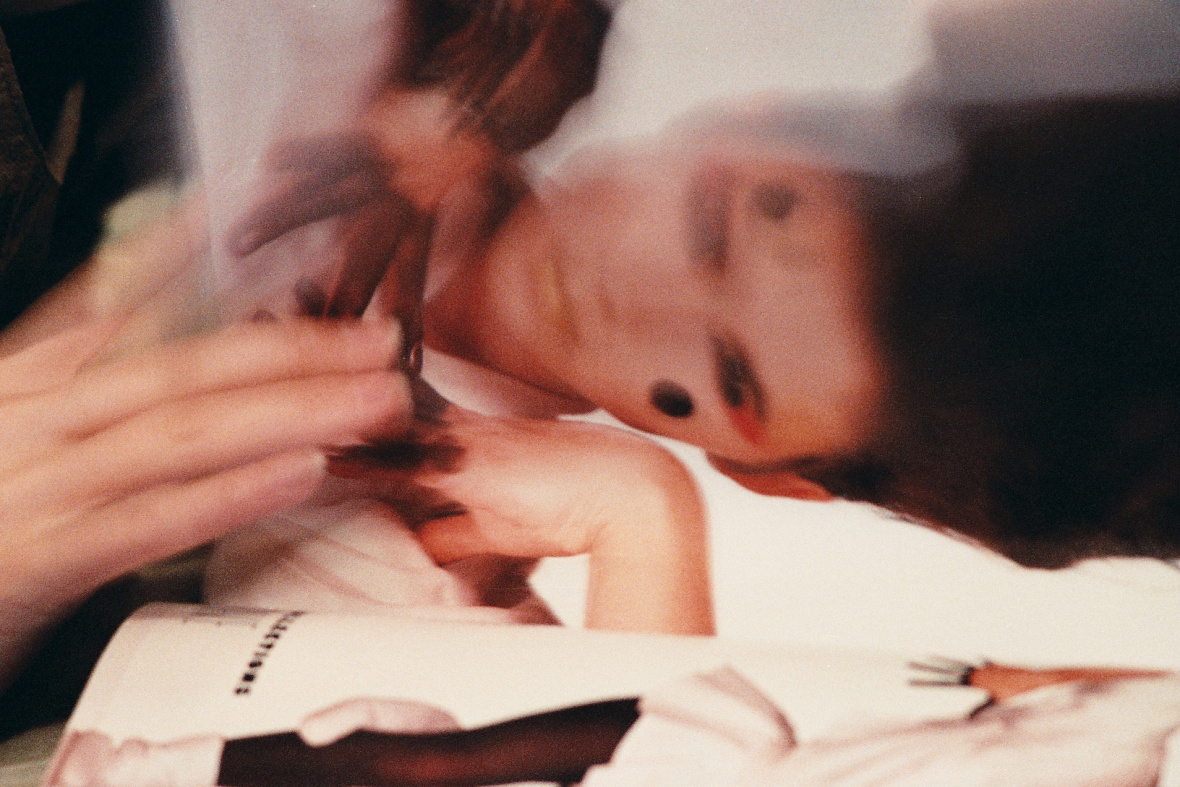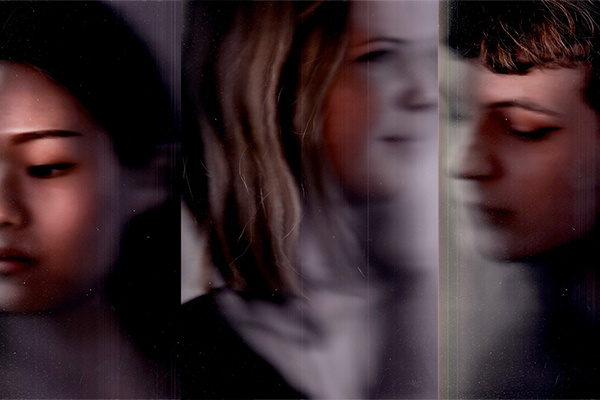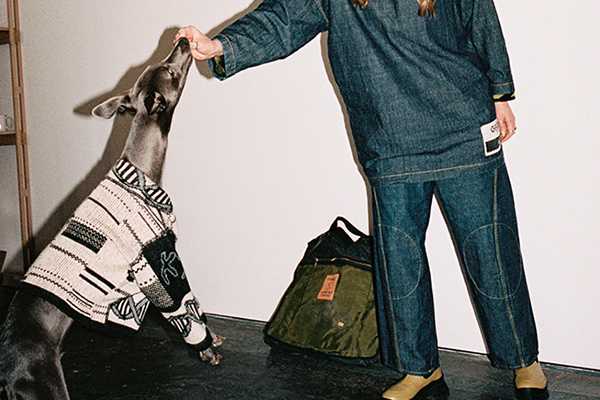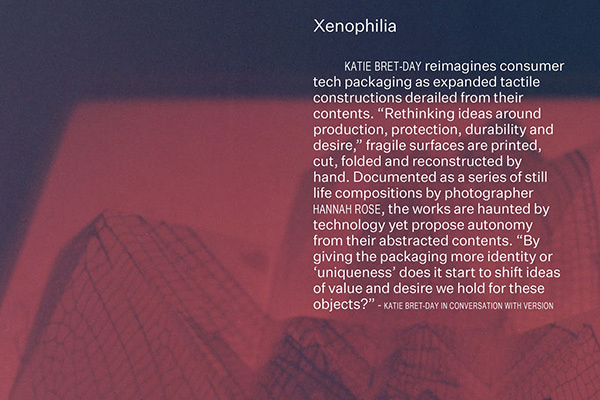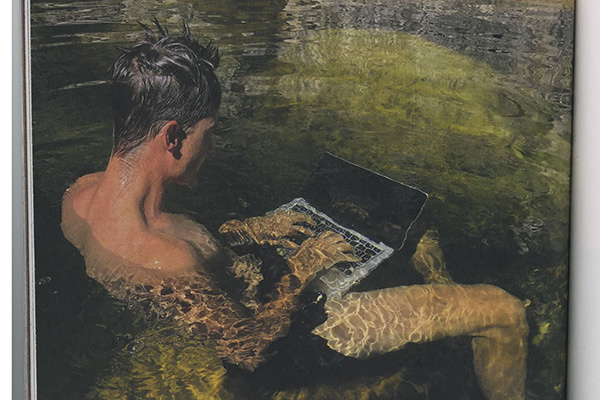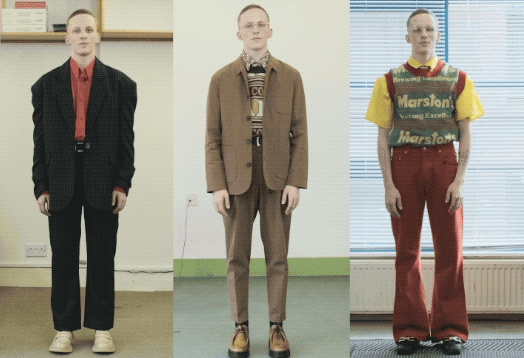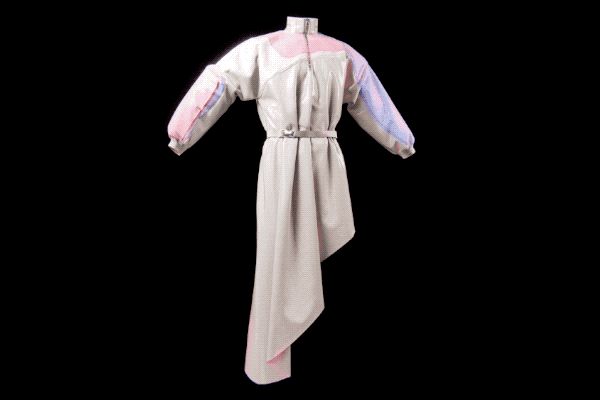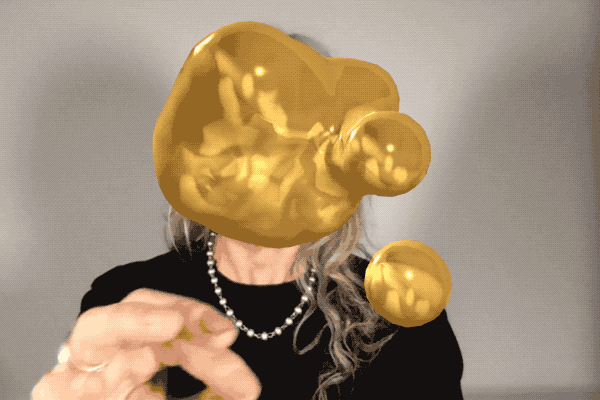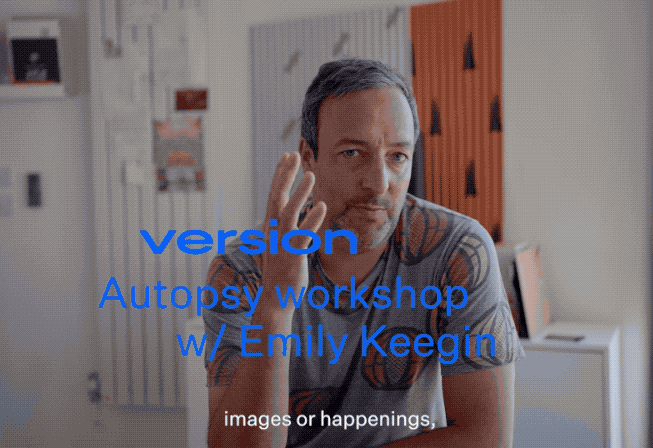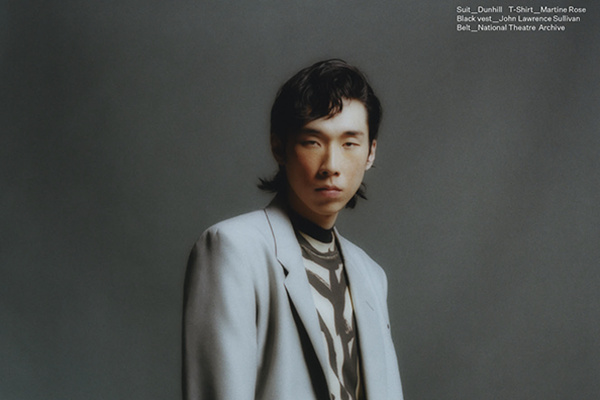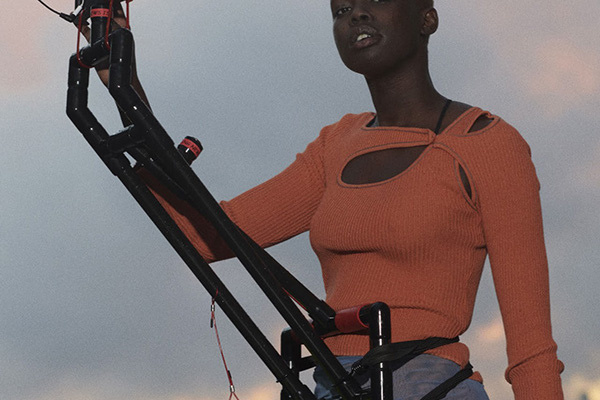NO WOMAN IS AN ISLAND
— Artist Alison Lloyd walks into the wilderness with a suitcase full of clothes. Interview by Hettie Judah
ALISON LLOYD documents her solitary walking pursuits in the Peak District through photographic objects which fuse the contours between landscape, body, apparel and camera. Alison discusses micro-navigation, happenstance and vulnerability with writer and critic HETTIE JUDAH.
PHOTOGRAPHY Alison Lloyd
YELLOW DRESS, BLACK COAT, FLORAL HEADDRESS Robert Wun
Hettie Judah — Your work feels like it has left an urban context to go out and explore the wild. When did you start walking? Is it something you did as a kid then rediscovered as an adult?
Alison Lloyd — I walked with my family as a kid on the grit stone moors around Halifax and the limestone landscapes of the Yorkshire Dales. I have lived most of my life in an urban environment; however, I explore each town and city area that I move to on foot. Moving around London I would catch the tube or bus to work and then find my way home walking. For most of my life I have been a city dweller: I drive my car to get to the remote places. In my walking art I have emphasised my specialist walking equipment – the wet weather gear, Gore-Tex waterproofs, hats, gloves, vacuum flask, and contemporary (state of the art) rucksack – often chosen for their colours in my search for a landscape aesthetic.
HJ — When did you first start bringing your art into the walking world?
AL — In March 2010 I decided that I would find a way to bring contemporary art together with walking. Training as a walking group leader and to use advanced navigation in mountainous and moorland areas, I was particularly interested in micro-navigation that concentrated on the shape of the land, and the contours of the map.
I appropriated these navigation techniques to use in ‘art walks.’ Later these became the processes by which I made personal photographic documentation of myself in the landscape.
My work involves walking alone, for considerable distances, keeping off the paths, striding and ‘contouring’ through moorland and mountainous areas. Through a passage of movement incorporating walking and dancing I have documented elements of my life since the mid 1970s.
Initially this took the form of group ‘art walks’ for museums, art galleries, art agencies and individual artists: QUAD, Derby; Nottingham Museum and Art Gallery; The Collection, Lincoln; Mostyn Art Gallery; Beacon Art Project, Lincolnshire, and artist and poet Alec Finlay on Skye. I made these walks my own by overlaying solitary walking experiences in moorland and mountain on an urban context. I would encourage participants to imagine they were out in the hills and incorporate navigation techniques, compass bearings, timing and pacing to offer different ways to experience their immediate environment.

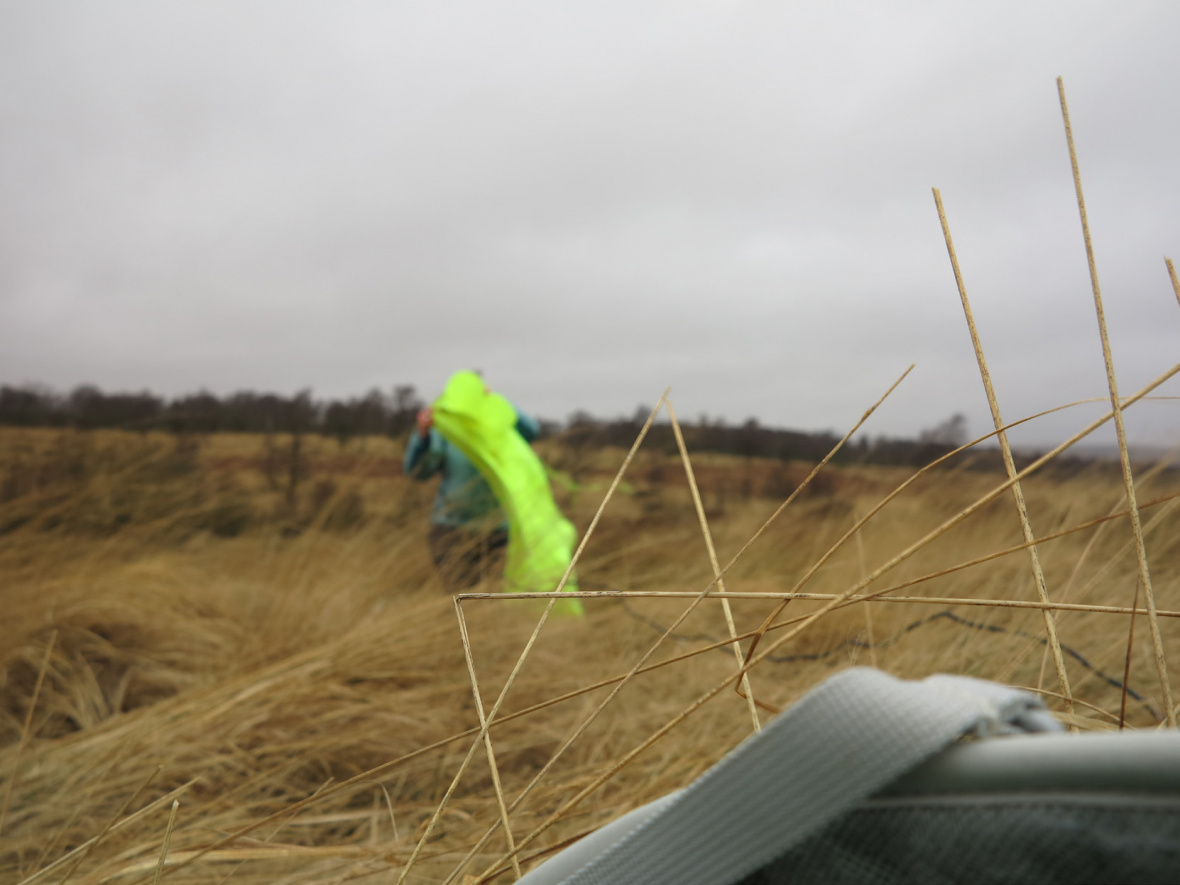

HJ — I often think of walking as a meditative occupation - how does bringing a camera into that context change things?
AL — I document my solitary pursuit of walking through photographic documentation, marking the contours between landscape, body, camera and cable release.
At points along my meticulously planned route I stop and photograph my actions. I explore my relationship to the vegetation, the vistas, the camera and the extent of the cable release: the process as much as the final outcome. My work appears to some entirely performative: in my approach to walking as art I am as interested in the photographic object as the walk, and the photographic series produced at each location. This is where the camera changes things.
HJ — How do you see your art in the context of other artist walkers? Often artist walks take place in urban contexts - from the flâneurs to Janet Cardiff?…
AL — I must have wanted to escape and explore walking art as a solitary pursuit in the early stages of returning to an artistic practice. At first I wanted to walk in the footsteps of Hamish Fulton and Richard Long – artists who often work and walk in rural landscapes. I then met women artist-activists from the Walking Artists Network and realised how varied the adoption of walking was. I trained in the 1970s and my work owes much to conceptual art. It is important that I see myself for what I am: an urban dweller. I live in Nottingham, and have to travel to access these so called wilder landscapes. As noted before, I wear technical walking gear and include this paraphernalia on the margins of my photographs.
As I moved to using practical aspects of walking as a form of conceptual art, these elements of hillwalking surfaced as a central theme and subject.
HJ — There is tension associated with the figure of a woman alone in a landscape: culturally there is a suggestion that lone women are at risk in the wilds. Is this a consideration in your work?
AL — Yes it is. I want to feel at risk, and definitely go in search of otherworldly atmosphere. I repeatedly walk in a bleak area of the Dark Peak, where I feel uncomfortable. I actually think that I am much safer in remote locations. I rarely meet anyone out on the hills. I suppose that is how I like it. I can concentrate on engaging with and documenting the places I select: intriguing-sounding destinations such as Grains in the Water, Nether Reddale Clough, Oyster Clough, Ridgewalk and Hope Forest Moor.
HJ — Do you always carry a camera? To what extent are these shots pre-planned? Do you embrace chance?
AL — I always carry my iPhone and a digital or analogue camera. The shots are rarely totally planned, as I like to work with the site I have selected by looking at the map. I plan my route, but I don’t plan the photographs. In addition, as I use a cable release, I enjoy recording the happening of walking, the accidental images that capture unexpected moments, times that I’m caught off guard. If I overly plan these shots they don’t work. I think for this reason I have to go to new places in order to ‘perform’ with some spontaneity.
Happenstance is central. For the fashion shoot I surveyed the site in advance, like I might prepare for a group ‘art walk’. On the day, the weather and light is a surprise.
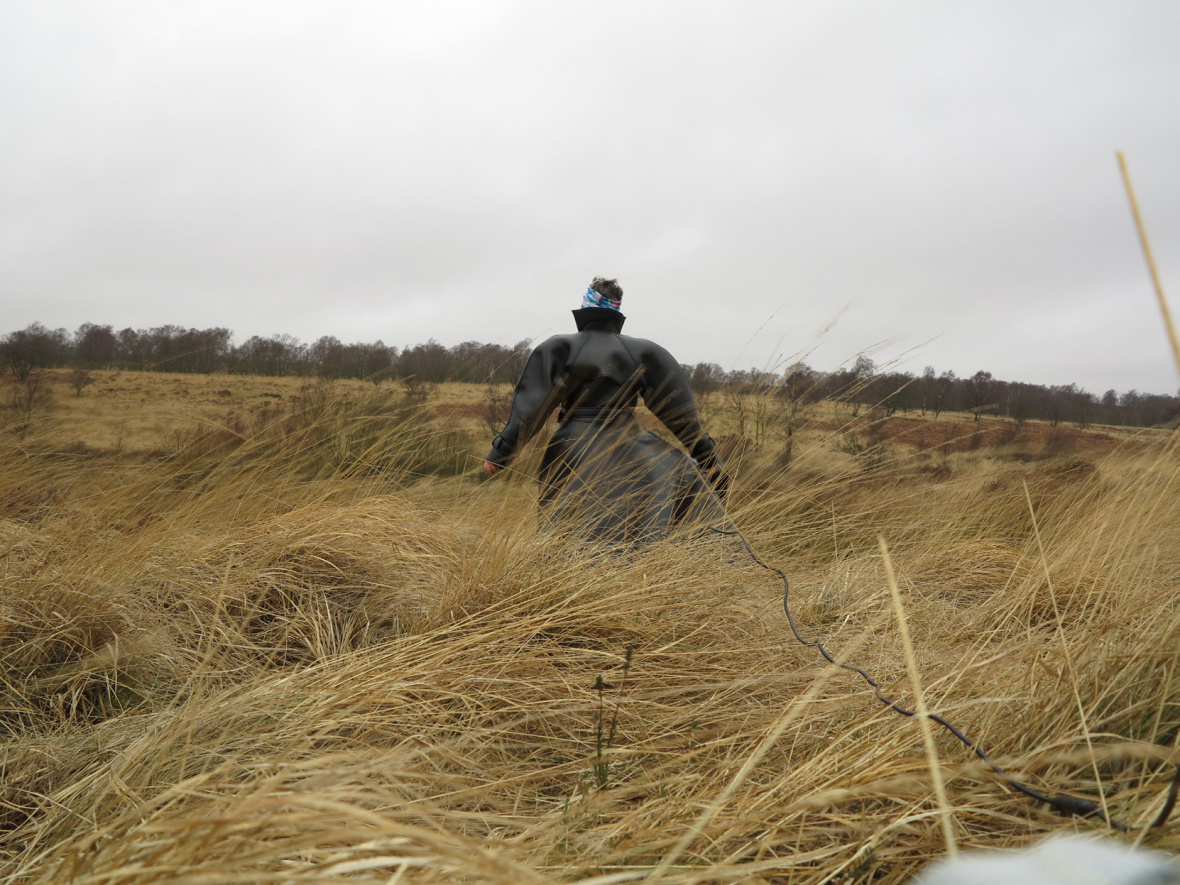

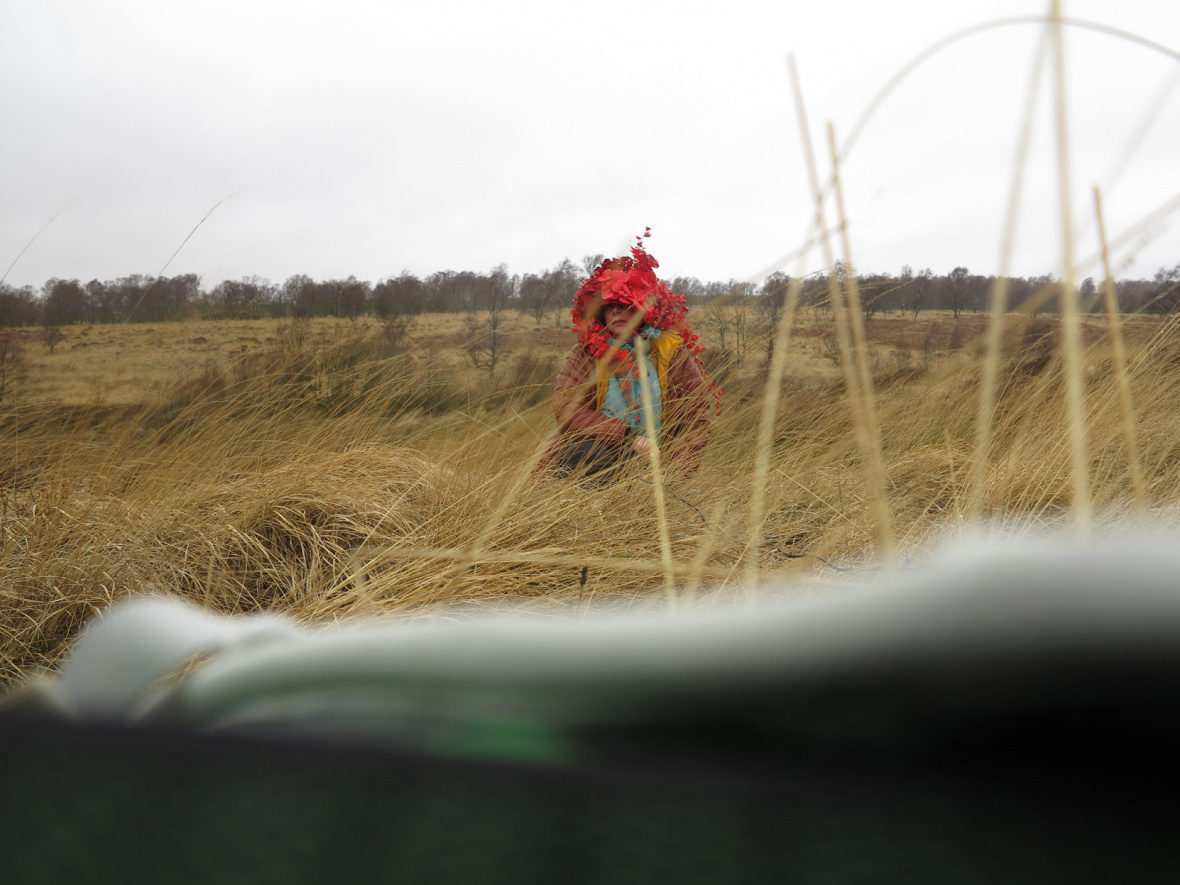

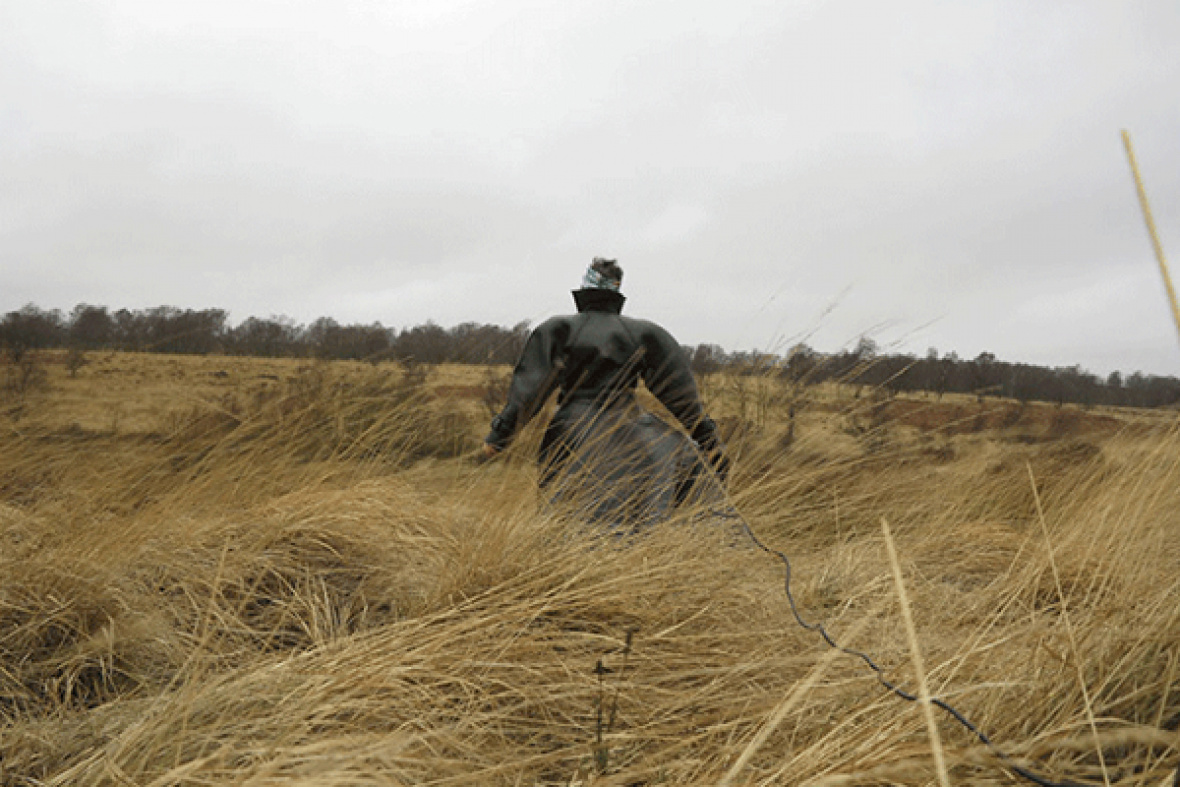
HJ — What camera do you use? Why?
AL — I use a simple, SLR digital camera, which can be used on automatic mode or manually. It is slightly more sophisticated than a point- and- shoot. Because I often walk some distance and carry everything I need for the day I like to keep my rucksack light, hence the small camera. I don’t take a tripod: I simply stand my camera on the flat surface of my rucksack. Thus the rucksack material, shoulder pads and buckles enter the framing of the photographs. As well as the trailing cable, the rucksack appears in the foreground, sometimes in focus, often out.
HJ — What role does that visible connection to the camera – the cable – play in the construction of your images?
AL — It was initially a practical way of documenting the actions and experiences of walking alone. It leads the eye where my feet have walked and links me with the viewer. It articulates a connection between camera and artist, and I think emphasises my aloneness. The images are constructed and framed in the use of my walking equipment together with the cable release.
HJ — Do you think of your work as photography, or as an extended practice that includes performance for the camera?
AL — I work with both: a private performance in front of the camera and a record of my experience hillwalking.
I began as an enthusiastic recreational walker, and then expanded into a performative art practice employing the skills of hillwalking. I use photographs to record the ephemeral experience of walking. I stage my photographs, using a cable release or the camera’s timer function to capture uncertain moments, the in-between, and intermediate or liminal actions of walking activities.
I have referred to these photographic series as ‘events’ that capture a range of speculative and choreographed happenings. They are often presented in the order they were shot, recalling moving-image capture and the documentation of performance.
HJ — You have placed yourself in front of the lens over the course of your career - has your relationship with the camera changed?
AL — My relationship with the camera has changed as I have explored different aspects of my life. At first it was about recording a young woman’s discovery of her own identity and independence.
I hope that I move between a self-portrait and a portrait of my surroundings. In the 1970s this was an exploration of life as a young woman in her bedsit getting ready to go out. An interest in dance and movement – nightclubbing –prevailed in the 1970s and 80s. More recently this has become an exploration of walking as an art form.
HJ — How did you take to being a fashion model - and fashion photographer?
AL — I swapped outdoor technical gear for urban fashion.
I loved hauling the suitcase around the muddy puddles and across the grassy tussocks to the place I wanted for the photo shoot. Throughout the afternoon I grappled with horizontal rain and irregular gusts of wind. The whole experience was inspiring.
I did my own thing. The results still look like my work despite wearing coats, dresses and hats more usually associated with the city.
Examples of Lloyd's early work
